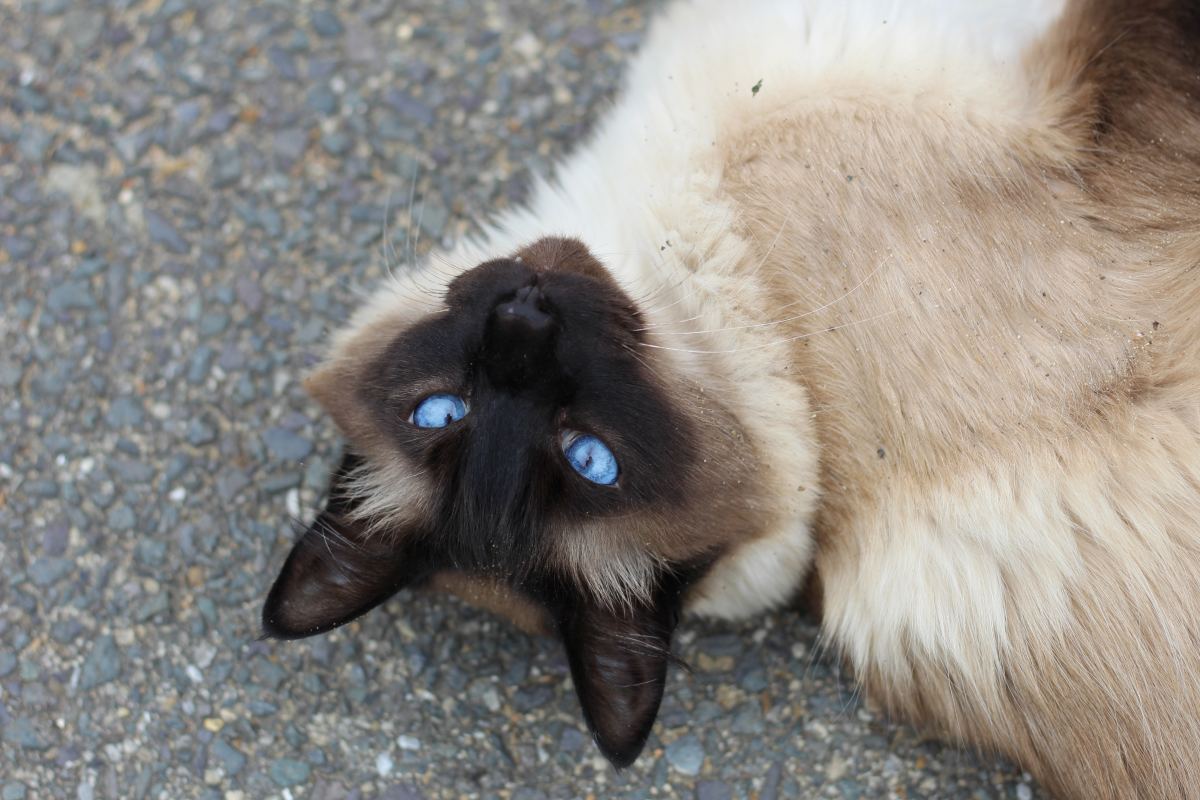Yes, Ragdoll cats enjoy climbing due to their agile and playful nature. Ragdoll cats are known for their affectionate and docile temperament, but don’t let that fool you – they also love to climb.
These beautiful felines possess a keen sense of curiosity and adventure, which often leads them to explore their surroundings by ascending to higher places. From perching on bookshelves to scaling cat trees, Ragdolls enjoy being elevated, allowing them to observe their environment from a safe and comfortable vantage point.
This climbing behavior not only satisfies their natural instincts but also provides them with mental stimulation and exercise. So, if you have a Ragdoll cat, be prepared to find them in some unexpected high places!
Understanding Ragdoll Cats
Ragdoll cats are known for their playful nature but climbing may not be their favorite activity. While some Ragdolls may enjoy climbing, others may prefer staying grounded and seeking comfort in their cozy beds or human laps. Understand your cat’s preferences and provide appropriate climbing options if they show interest.
Ragdoll cats are known for their beauty, gentle nature, and unique characteristics. If you’re considering bringing a Ragdoll cat into your home, it’s essential to understand their origins, characteristics, and temperament. By knowing more about these delightful felines, you can ensure a harmonious and fulfilling relationship.
Origins And Characteristics
Ragdoll cats originated in the 1960s in Southern California, when a peculiar longhaired cat named Josephine caught the eye of a breeder named Ann Baker. Josephine possessed exceptional traits – she had a friendly disposition, striking blue eyes, and a tendency to go limp when picked up, hence the name “Ragdoll.” Through selective breeding, Baker sought to preserve these characteristics and establish a breed that epitomized the ideal companion cat.
Ragdolls are large, sturdy cats, with males weighing between 15-20 pounds and females ranging from 10-15 pounds. They have a medium-length silky coat that comes in various colors and patterns, including seal, blue, chocolate, lilac, flame, cream, and tortoiseshell. One of their most distinctive features is their captivating blue eyes, which can range from deep sapphire blue to a lighter shade.
These cats have a semi-long, soft, and silky fur that requires regular grooming to prevent matting and keep them looking their best. While they shed, their fur is not prone to tangling or clumping. Their coat is made up of low-allergenic hairs, making them a suitable choice for individuals with cat allergies.
Temperament And Personality
Ragdolls are renowned for their docile, relaxed, and affectionate nature. They are often likened to small dogs due to their loyalty and willingness to follow their human companions around the house. Ragdolls thrive on human company and enjoy being the center of attention.
These cats are known for their sociability and get along well with children and other pets. They are generally not demanding or aggressive, making them an ideal choice for households with a calm and peaceful atmosphere. Ragdolls are not particularly vocal, but they will communicate with their soft voices when they want food, attention, or simply to express their contentment.
While Ragdolls are gentle by nature, they still have a playful side. They enjoy interactive playtime and will appreciate having toys, scratching posts, and climbing structures available to keep them entertained. This leads us to the question, do Ragdolls like to climb?
Yes, Ragdolls do enjoy climbing! These cats have a natural curiosity and agility that often leads them to explore their surroundings, including vertical spaces. Providing them with cat trees, shelves, or perches will fulfill their climbing instincts and give them opportunities to survey their kingdom from up high. Ragdolls’ calm and placid disposition, combined with their love for adventures, makes them perfect candidates for climbing activities.
Climbing Behavior In Ragdoll Cats
Ragdoll cats have natural instincts that incline them towards climbing.
Climbing is beneficial for Ragdoll cats in various ways such as exercise and mental stimulation.
Creating A Cat-friendly Environment
Ragdoll cats are known for their gentle and affectionate nature, and they also have a playful side that enjoys climbing. Felines, in general, have a natural instinct to climb and explore their surroundings. Creating a cat-friendly environment that allows Ragdoll cats to indulge in their climbing instincts is essential for their mental and physical well-being.
Provide Vertical Spaces
Ragdoll cats love to climb and perch on elevated surfaces, so it’s important to provide them with plenty of vertical spaces. Cat trees, shelves, and wall-mounted perches can give them the opportunity to satisfy their climbing urges while also providing a sense of security and ownership over their space. By offering multiple vertical options, you can encourage them to stay off countertops and other potentially hazardous areas.
Choose Sturdy And Safe Furniture
When selecting furniture for your home, prioritize items that are sturdy and safe for your Ragdoll cat to climb on. Look for furniture made from durable materials that can support your cat’s weight without wobbling or tipping over. Avoid pieces that have small, unstable components that could potentially injure your pet. Incorporating cat-friendly furniture into your decor not only enhances your cat’s environment but also contributes to the overall aesthetic of your home.

Credit: pethelpful.com
Teaching Your Ragdoll To Climb
Ragdoll cats are known for their love of climbing, making it a great activity to engage them. Discover effective ways to teach your Ragdoll to climb and satisfy their natural instincts.
Teaching Your Ragdoll to Climb Ragdoll cats are known for their docile nature and gentle disposition. While they may not be as naturally inclined to climb as some other breeds, with the right techniques and encouragement, you can teach your Ragdoll to climb and enjoy a higher vantage point. Introducing climbing activities to your Ragdoll can provide mental stimulation and exercise, ensuring a healthy and happy feline companion.Introduction To Climbing
Climbing is a natural behavior for many cats, allowing them to mimic their instinctual behaviors like perching in trees to observe their surroundings. For Ragdoll cats, introducing climbing activities can help satisfy their curiosity and fulfill their innate desire to explore vertical spaces.Training Techniques
When teaching your Ragdoll to climb, it’s essential to start with gradual introduction and positive reinforcement. Here are some training techniques to consider: Encouragement: Use gentle encouragement and verbal praise when your Ragdoll shows interest in climbing. Encourage them to explore cat trees, shelves, and window perches. Interactive Play: Incorporate interactive playtime near elevated surfaces to pique your cat’s interest in climbing. Use wand toys and treats to entice them to climb and explore. Scratching Posts: Place scratching posts near desired climbing areas to encourage your Ragdoll to climb and explore while satisfying their natural urge to scratch. Safety Measures: Ensure that the climbing areas are safe and stable, with no risk of injury. Supervise your cat initially to prevent accidents and offer reassurance. By introducing these training techniques, you can gradually acclimate your Ragdoll to the concept of climbing and create a stimulating environment for them to explore. Overall, while Ragdoll cats may not instinctively seek out high perches, with patience and positive reinforcement, you can teach them to enjoy climbing and provide them with a rewarding and enriching experience.Troubleshooting Common Challenges
Discovering solutions to common challenges for Ragdoll cat owners regarding their climbing habits. Understanding if Ragdoll cats have a natural inclination towards climbing and providing tips to ensure their safety and enrichment in a vertical environment. Explore the dynamics of Ragdoll cats as climbers and how to address any related issues effectively.
Fear Or Reluctance To Climb
Ragdoll cats may exhibit fear or reluctance to climb due to their docile nature.
Destructive Climbing Behavior
Some Ragdoll cats may engage in destructive climbing behavior when bored or seeking attention.
“` Troubleshooting Common Challenges: Ragdoll cats, known for their affectionate nature, can sometimes face challenges with climbing behavior. Understanding these issues can help owners create a more suitable environment for their feline friends. “`htmlFear Or Reluctance To Climb
Ragdoll cats may exhibit fear or reluctance to climb due to their docile nature.
Destructive Climbing Behavior
Some Ragdoll cats may engage in destructive climbing behavior when bored or seeking attention.

Credit: blog.omlet.us

Credit: www.amazon.com
Frequently Asked Questions Of Do Ragdoll Cats Like To Climb
Do Ragdolls Like High Places?
Yes, Ragdolls are known for enjoying high places due to their curious and adventurous nature. They often seek out elevated spots to observe their surroundings and feel safe. Providing vertical spaces can enhance their living environment and enrichment.
Can Ragdoll Cats Climb?
Yes, Ragdoll cats can climb as they are known for their agility and love for climbing.
Do Ragdolls Like To Be Up High?
Yes, Ragdolls enjoy being up high as they are climbers by nature. Providing cat trees or shelves will make them happy.
Do Ragdoll Cats Jump On Counters?
Yes, Ragdoll cats may jump on counters.
Conclusion
To conclude, Ragdoll cats have a natural inclination towards climbing due to their playful and curious nature. Providing appropriate spaces for them to climb can enhance their physical and mental well-being. Understanding their climbing behavior can help create a safe and enriching environment for these charming felines.



